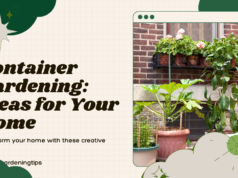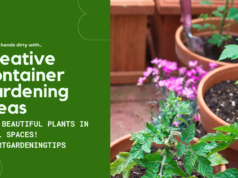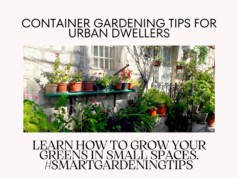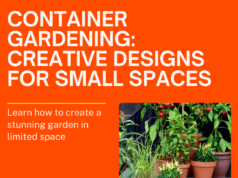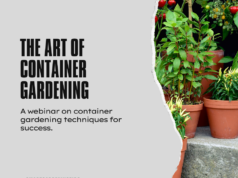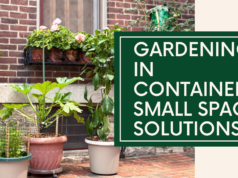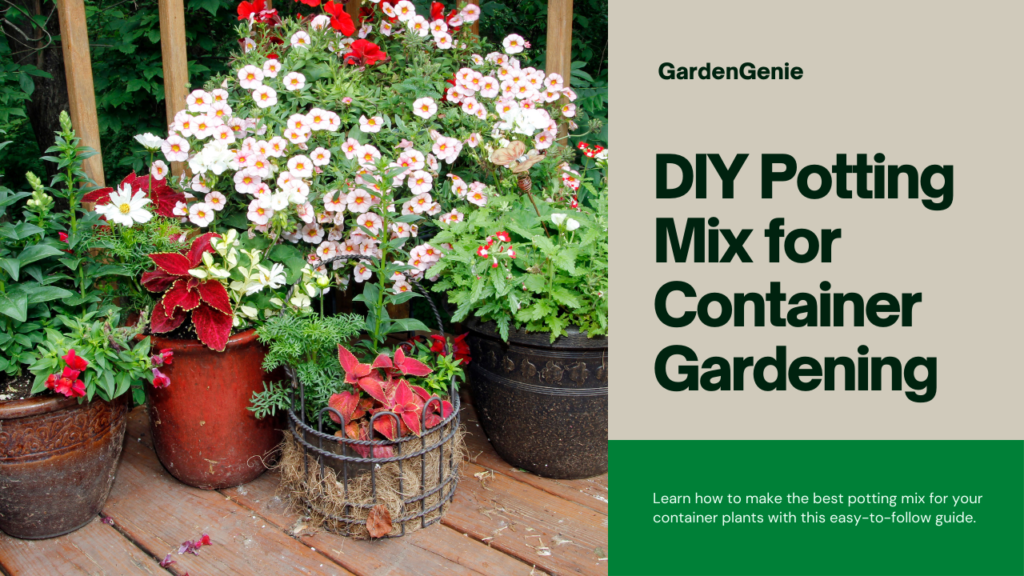
Welcome to our guide on creating the best DIY potting mix for your container gardening needs. Whether you’re a seasoned gardener or just starting out, using a high-quality potting mix is essential for creating a thriving garden in containers. In this article, we will explore the importance of DIY potting mix, discuss the essential components, and provide tips for sourcing and preparing organic materials. By the end, you’ll have all the knowledge you need to create a custom potting mix that will give your plants the best chance to flourish.
Key Takeaways:
- Using a high-quality DIY potting mix is crucial for successful container gardening.
- The right potting mix provides necessary nutrients, proper water retention, and efficient drainage for plants.
- Understanding the essential components and their proportions is key to creating a successful mix.
- Sourcing and preparing organic materials are important steps in creating a nutrient-rich potting mix.
- Mineral additives improve water retention and drainage in the mix.
The Role of Potting Mix in Container Gardening
When it comes to successful container gardening, the role of potting mix cannot be underestimated. A high-quality potting mix provides the essential foundation for healthy plant growth in containers. Not only does it supply the necessary nutrients, but it also ensures proper water retention and efficient drainage, both of which are crucial for the well-being of your plants.
Understanding the key components of potting mix is vital for creating an optimal growing environment for your container plants. A well-balanced mix should offer a balance between water retention and drainage, providing your plants with the ideal amount of moisture while preventing waterlogged roots. Additionally, it should contain the necessary nutrients to support plant growth and development.
The quality of your potting mix directly impacts the health and vitality of your container garden. By using a mix that is specifically formulated for container gardening, you can ensure that your plants have the best possible start. Homemade potting mixes allow you to customize the blend according to your specific needs, giving you greater control over the composition and quality of the soil.
“The right potting mix can make all the difference in container gardening success. It provides the necessary foundation for healthy plant growth and ensures that your plants receive the essential nutrients, water, and oxygen they need.”
By investing time and effort into creating or selecting the right potting mix, you can set your container garden up for success. With a well-balanced mix in place, your plants will be better equipped to withstand fluctuations in temperature, weather conditions, and other external factors that could potentially impact their well-being.
Continue reading to discover the essential components of a DIY potting mix and learn how to source and prepare them for optimal plant growth in the next section.
Essential Components of a DIY Potting Mix
Creating a successful DIY potting mix for your container garden requires understanding the essential components that contribute to its nutrient-rich composition. By carefully selecting and combining organic materials and mineral additives, you can create a custom mix recipe that promotes healthy plant growth and provides optimal water retention and drainage.
Let’s take a closer look at the key components of a DIY potting mix:
1. Organic Materials:
To ensure your potting mix is nutrient-rich, you’ll need a variety of organic materials. These can include:
- Compost: Compost provides essential nutrients and improves soil structure. It adds organic matter and enhances moisture retention.
- Peat Moss: Peat moss helps retain water, improve aeration, and create a light texture in the mix.
- Coco Coir: Coco coir is an eco-friendly alternative to peat moss, offering similar water retention properties.
- Rotted Manure: Rotted manure enriches the soil with nutrients and improves its overall fertility.
2. Mineral Additives:
In addition to organic materials, incorporating mineral additives is crucial for proper water retention and drainage. Popular mineral additives include:
- Perlite: Perlite improves aeration, helps with drainage, and prevents compacting of the mix.
- Vermiculite: Vermiculite retains water and nutrients, providing moisture to plant roots.
- Sand: Adding sand improves drainage and prevents waterlogging in the mix.
Proper proportions and ratios of these components are vital to creating a well-balanced DIY potting mix. Favoring organic materials for nutrient content while ensuring adequate mineral additives for proper drainage can help your plants thrive in containers.
By experimenting with different ingredient combinations and adjusting proportions based on the specific needs of your plants, you can refine your mix recipe to achieve optimal growth and overall plant health.
Now that we’ve explored the essential components of a DIY potting mix, let’s move on to Section 4 to learn about sourcing and preparing organic materials to create a nutrient-rich mix.
Sourcing and Preparing Organic Materials for the Mix
Creating a successful DIY potting mix relies on sourcing and preparing the right organic materials. By using nutrient-rich organic options, you can enhance soil fertility and promote healthier plants. Here, we will discuss various options for sourcing these organic materials and provide tips on preparing them for incorporation into your mix.
Sourcing Organic Materials
When it comes to sourcing organic materials for your potting mix, there are several options you can consider. Here are a few popular choices:
- Compost: Utilize homemade or commercially available compost to provide organic matter and a wide range of nutrients.
- Peat Moss: Known for its ability to retain moisture, peat moss is an excellent addition for improving water retention in your mix.
- Coco Coir: This renewable resource is an alternative to peat moss and offers similar benefits in terms of moisture retention.
- Leaf Mold: As leaves break down, they form leaf mold, which is rich in nutrients and helps improve soil structure.
These organic materials can be sourced from local garden centers, nurseries, or even created at home through composting and leaf collection. By choosing organic options, you are ensuring a sustainable and environmentally friendly approach to gardening.
Preparing Organic Materials
Before incorporating organic materials into your DIY potting mix, it’s essential to prepare them appropriately. Here are some tips to help you get started:
- Compost: If using homemade compost or purchasing it, ensure it’s well-aged and free of pests or weed seeds. Break down any large chunks and remove debris before adding it to your mix.
- Peat Moss and Coco Coir: Both peat moss and coco coir should be hydrated prior to use. Follow the instructions on the packaging to ensure proper hydration, as this helps improve water retention capabilities.
- Leaf Mold: Collect fallen leaves and allow them to decompose over time. Turning the pile occasionally will help speed up the decomposition process. Once the leaves have turned into leaf mold, break down any large pieces and remove excess debris.
By taking the time to prepare your organic materials, you are ensuring that they are in the best condition for providing nutrients and improving the overall quality of your potting mix.
Remember, using organic materials in your DIY potting mix not only benefits your plants but also promotes sustainability and environmental stewardship.
Now that you understand the importance of sourcing and preparing organic materials, you are ready to proceed with creating your DIY potting mix. In the next section, we will explore the essential components of a successful mix recipe, including both organic materials and mineral additives.
Incorporating Mineral Additives for Water Retention
When it comes to creating a thriving garden in containers, proper water retention and drainage are vital. That’s where mineral additives come in. These additives, when incorporated into your DIY potting mix, can greatly enhance its water retention capabilities, ensuring your plants receive the moisture they need while also preventing waterlogging.
There are various types of mineral additives that you can consider. Let’s take a closer look at some of the popular options:
- Perlite: – This lightweight volcanic rock creates air pockets in the soil, improving drainage and preventing compaction.
- Vermiculite: – This mineral has excellent water retention properties and helps retain moisture in the soil for longer.
- Pumice: – Similar to perlite, pumice is a lightweight volcanic rock that enhances drainage and prevents soil compaction.
When selecting mineral additives, it’s essential to consider the specific needs of your plants. Some plants, such as succulents, prefer drier conditions and require additives that promote better drainage. On the other hand, moisture-loving plants like ferns benefit from additives that aid in water retention.
By incorporating mineral additives into your DIY potting mix, you create a well-balanced environment for your container plants. The additives enhance water retention and improve drainage, striking the perfect balance to support healthy growth.
Customizing DIY Potting Mix Recipes for Various Plants
In container gardening, different types of plants have specific requirements for optimal growth. By customizing your DIY potting mix recipes, you can provide the ideal conditions for plants such as succulents, herbs, and vegetables. Let’s explore some tailored recipes and guidelines to ensure your plants thrive.
Recipe for Succulents
Succulents require well-draining soil to prevent root rot. Here’s a recipe that suits their needs:
| Components | Proportion |
|---|---|
| Perlite | 2 parts |
| Cactus soil | 2 parts |
| Sand | 1 part |
Recipe for Herbs
Herbs require a nutrient-rich mix that retains moisture. Here’s a recipe that suits their needs:
| Components | Proportion |
|---|---|
| Compost | 3 parts |
| Peat moss | 1 part |
| Perlite | 1 part |
Recipe for Vegetables
Vegetables require a well-balanced mix that provides nutrients and retains moisture. Here’s a recipe that suits their needs:
| Components | Proportion |
|---|---|
| Compost | 2 parts |
| Peat moss | 1 part |
| Vermiculite | 1 part |
These recipes serve as a starting point, but you can adjust the proportions based on your plants’ specific needs. Remember to consider factors such as light requirements, moisture levels, and nutrient preferences when customizing the mix for different plant varieties.
Benefits of Using DIY Potting Mix in Container Gardening
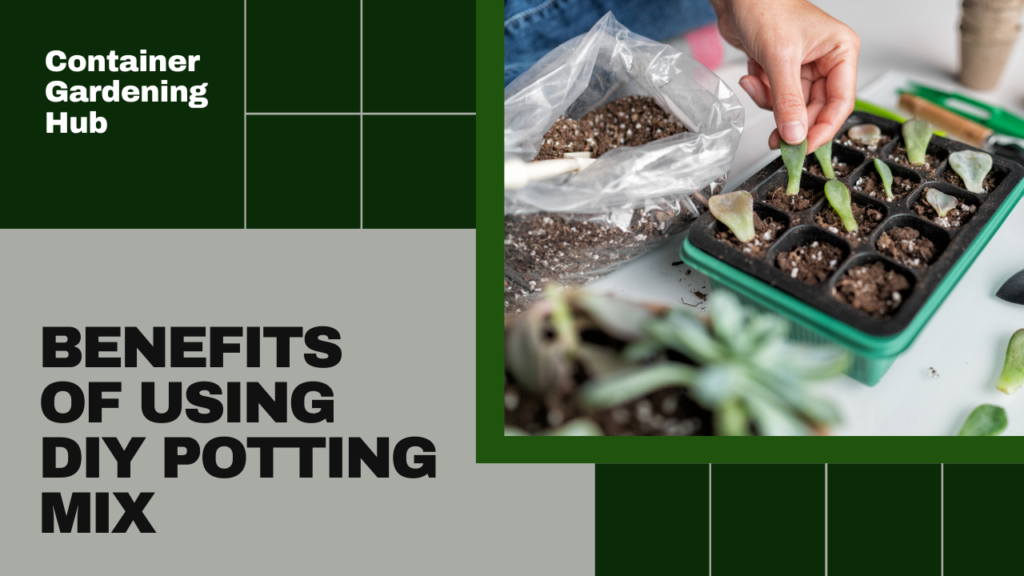
Using a DIY potting mix in your container gardening comes with a multitude of benefits. Not only does it give you more control over the composition of your soil, but it also offers cost-effectiveness compared to store-bought alternatives. Let’s explore these benefits further:
1. Control Over Mix Composition
With a DIY potting mix, you have the freedom to choose the ingredients that best suit your plants’ needs. By customizing the mix based on specific requirements such as moisture retention and nutrient levels, you can ensure optimal growing conditions.
2. Cost-Effectiveness
Creating your own potting mix can be a cost-effective solution for container gardening. Store-bought mixes can be expensive, especially if you have a large garden. DIY potting mix allows you to save money without compromising on quality.
3. Customization for Plant Requirements
Each plant has unique needs when it comes to soil composition. By making your own potting mix, you can tailor it to cater to different plants in your container garden. Whether you’re growing succulents, herbs, or vegetables, you can adjust the mix to provide the ideal growing environment.
4. Healthier Plants and Better Gardening Results
The use of a DIY potting mix can contribute to healthier plants and better gardening results. By incorporating organic materials and mineral additives, you can ensure that your plants receive essential nutrients, proper water retention, and efficient drainage. This leads to improved plant growth, blooming, and overall vitality.
DIY potting mix helps you create a thriving container garden with healthier plants and better gardening results. With control over the mix composition, cost-effectiveness, and customization options, you can set the stage for successful container gardening.
| Benefits of Using DIY Potting Mix in Container Gardening |
|---|
| Control over mix composition |
| Cost-effectiveness |
| Customization for plant requirements |
| Healthier plants and better gardening results |
Comparing Homemade Potting Mix to Store-Bought Alternatives
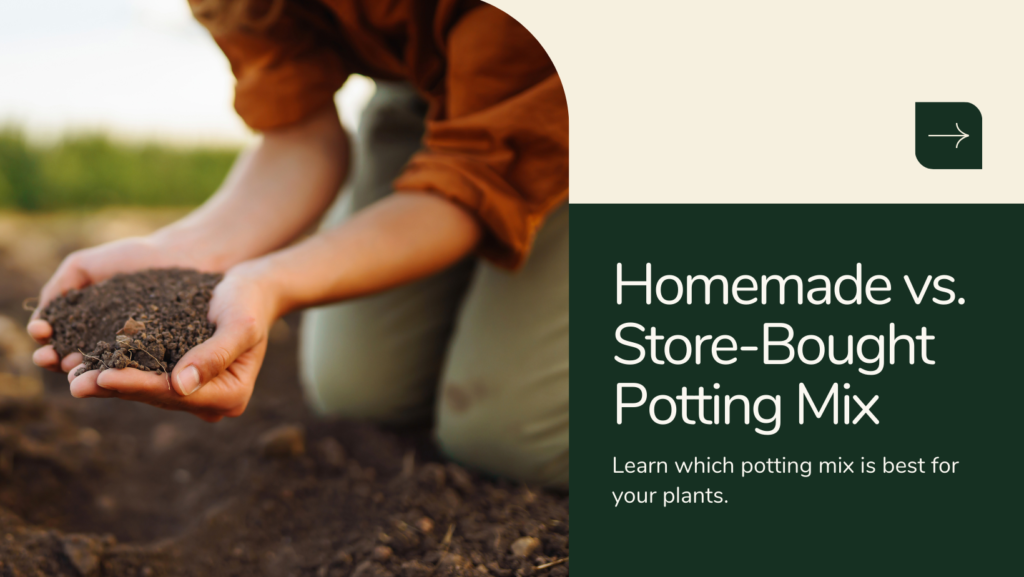
In this section, we will examine the pros and cons of homemade potting mix and store-bought alternatives, allowing you to make an informed decision for your container gardening needs.
Homemade Potting Mix: Pros and Cons
Homemade potting mix offers several advantages for container gardening enthusiasts. By creating your own mix, you have complete control over the composition and can customize it to suit the specific needs of your plants. Additionally, homemade potting mix can be cost-effective, as organic materials can often be sourced inexpensively or even obtained for free. It also provides the satisfaction of creating a blend tailored to your gardening preferences.
On the downside, preparing homemade potting mix requires time and effort. Sourcing the necessary organic materials and properly preparing them can be a labor-intensive process. Furthermore, creating the perfect balance of nutrients and maintaining consistency in each batch may require some trial and error.
Store-Bought Alternatives: Pros and Cons
Store-bought potting mixes provide convenience and consistency. They are readily available and save you the time and effort required to prepare a homemade mix. These commercial options are usually formulated to provide a good balance of nutrients, water retention, and drainage.
However, store-bought potting mixes may lack the customization options that come with homemade mixes. They are designed to cater to a wide range of plants, which may not meet the specific requirements of every plant. Another consideration is the cost, as store-bought potting mixes can be more expensive compared to creating your own.
Comparative Analysis
To help you visualize the differences between homemade potting mix and store-bought alternatives, here is a comparison table:
| Criteria | Homemade Potting Mix | Store-Bought Alternatives |
|---|---|---|
| Customization | You have full control over the composition and can adjust it based on specific plant needs. | Commercial mixes are formulated for general use and may not cater to specific plant requirements. |
| Cost | Can be cost-effective, especially if you can source organic materials inexpensively or for free. | Generally more expensive due to packaging, branding, and convenience factors. |
| Quality | Quality depends on the ingredients and preparation methods used. | Commercial mixes are consistent and often tested for optimal plant growth. |
| Availability | Availability may be dependent on local resources and access to organic materials. | Widely available in garden centers and stores. |
Now that you have a clearer understanding of the pros and cons of homemade potting mix and store-bought alternatives, you can decide which option best suits your container gardening needs.
Tips for Maintaining Healthy Plants Using DIY Mixes
Once you’ve created your own DIY potting mix for your container garden, it’s important to know how to maintain healthy plants and get the most out of your mix. Follow these tips to ensure your plants thrive:
1. Watering Techniques
Proper watering is essential for maintaining healthy plants. The key is to water consistently, ensuring the soil remains moist but not waterlogged. Avoid overwatering, as it can lead to root rot and other issues. Check the moisture level regularly by inserting your finger about an inch into the soil. If it feels dry, it’s time to water. Consider investing in a moisture meter for more accurate readings.
2. Fertilization
While DIY potting mixes often contain nutrient-rich organic materials, plants may still benefit from additional fertilization. Use a balanced slow-release fertilizer or organic options like compost or worm castings. Follow the packaging instructions or dilute liquid fertilizers to avoid overfeeding your plants. Apply fertilizers according to the specific needs of each plant variety, as different plants require different nutrients.
3. Pest Control
Pests can wreak havoc on your container garden, so it’s important to implement pest control measures. Regularly inspect your plants for common pests like aphids, whiteflies, or spider mites. Identify the specific pest to determine the best course of action, which may include using natural insecticidal soaps, neem oil, or introducing beneficial insects like ladybugs or predatory mites. Act promptly at the first signs of infestation to prevent damage to your plants.
4. Proper Container Maintenance
Maintaining clean and well-maintained containers contributes to healthy plant growth. Regularly remove dead or decaying foliage, as it can attract pests and promote disease. Clean the containers between planting to remove any potential pathogens. Consider repotting your plants annually, refreshing the potting mix to provide vital nutrients and prevent nutrient depletion.
Tip: Over time, DIY potting mixes can compact, affecting drainage and root aeration. To prevent this, gently loosen the top layer of soil with a fork or small hand cultivator during routine maintenance. This will help maintain optimal soil structure for your plants.
By following these tips, you can maintain healthy plants using DIY potting mixes and enjoy a thriving container garden. With proper watering, fertilization, pest control, and container maintenance, your plants will flourish and reward you with beautiful blooms, delicious harvests, or lush foliage.
| Tips for Maintaining Healthy Plants Using DIY Mixes |
|---|
FAQ
Q. Why is potting mix important in container gardening?
A. Potting mix is essential in container gardening because it provides necessary nutrients, proper water retention, and efficient drainage for plants growing in containers.
Q. What are the key components of a DIY potting mix?
A. The essential components of a DIY potting mix include organic materials for nutrient-rich soil and mineral additives for water retention and drainage.
Q. How do I source and prepare organic materials for the mix?
A. To source and prepare organic materials for the DIY potting mix, you can collect compost, aged manure, leaf mold, and coconut coir. These materials should be properly prepared before mixing them into the potting mix.
Q. What mineral additives can I incorporate for proper water retention?
A. Mineral additives such as perlite, vermiculite, and pumice can improve water retention capabilities in the DIY potting mix.
Q. How can I customize the potting mix recipe for specific plants?
A. You can customize the potting mix recipe by adjusting the proportions and ratios of the components based on specific plant needs. Different plants require different soil conditions, and customizing the mix will ensure optimal growth.
Q. What are the benefits of using a DIY potting mix in container gardening?
A. Using a DIY potting mix allows you to have control over the mix’s composition, it is cost-effective compared to store-bought alternatives, and you can customize the mix based on your plant requirements, leading to healthier plants and better gardening results.
Q. How does homemade potting mix compare to store-bought alternatives?
A. Homemade potting mix offers the advantage of customization and potentially lower cost compared to store-bought alternatives. However, store-bought mixes may have standardized compositions and may be convenient for those who prefer ready-to-use options.
Q. What are some tips for maintaining healthy plants using DIY potting mixes?
A. To maintain healthy plants using DIY potting mixes, it is important to water correctly, provide appropriate fertilization, implement pest control measures, and regularly maintain the containers to ensure proper drainage and aeration.
Conclusion
In conclusion, creating your own DIY potting mix for container gardening can be a game-changer for your plants’ health and overall gardening success. Throughout this article, we have explored the importance of using a high-quality potting mix and the benefits it offers.
By understanding the role of potting mix in container gardening, you can provide your plants with the necessary nutrients, proper water retention, and efficient drainage for optimal growth. Knowing the essential components and proportions of a DIY potting mix allows you to customize recipes based on the specific needs of different plants, such as succulents, herbs, and vegetables.
Using DIY potting mix offers numerous advantages, including the ability to control the mix’s composition, cost-effectiveness compared to store-bought alternatives, and the flexibility to tailor the mix to meet your plant requirements. With proper maintenance techniques like watering, fertilization, pest control, and container upkeep, you can ensure the health and vitality of your plants using DIY mixes.
Now equipped with the knowledge and understanding of DIY potting mix, it’s time to put it into practice and witness the incredible difference it can make in your container gardening journey. So roll up your sleeves, get your hands dirty, and enjoy the rewarding experience of creating a thriving garden with your very own DIY potting mix!


